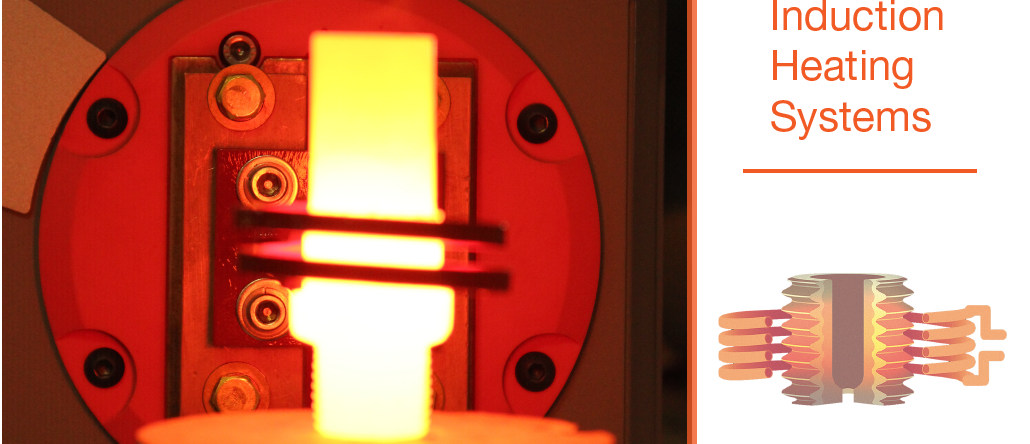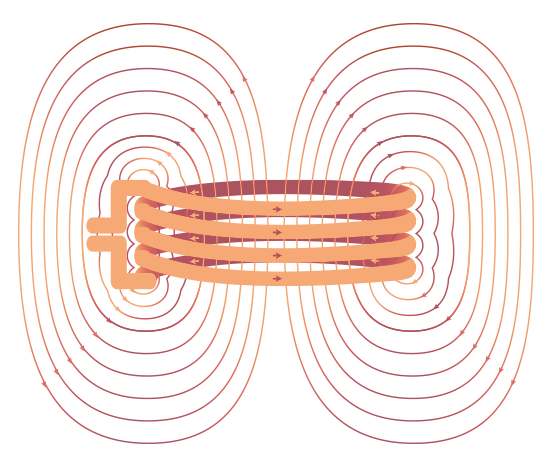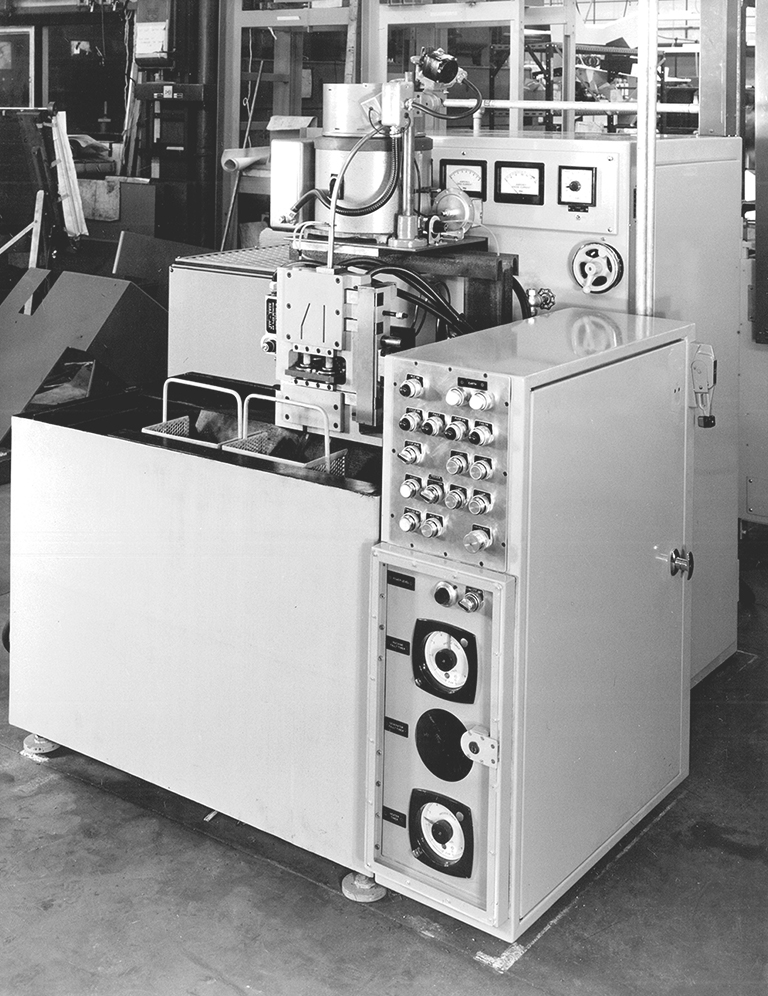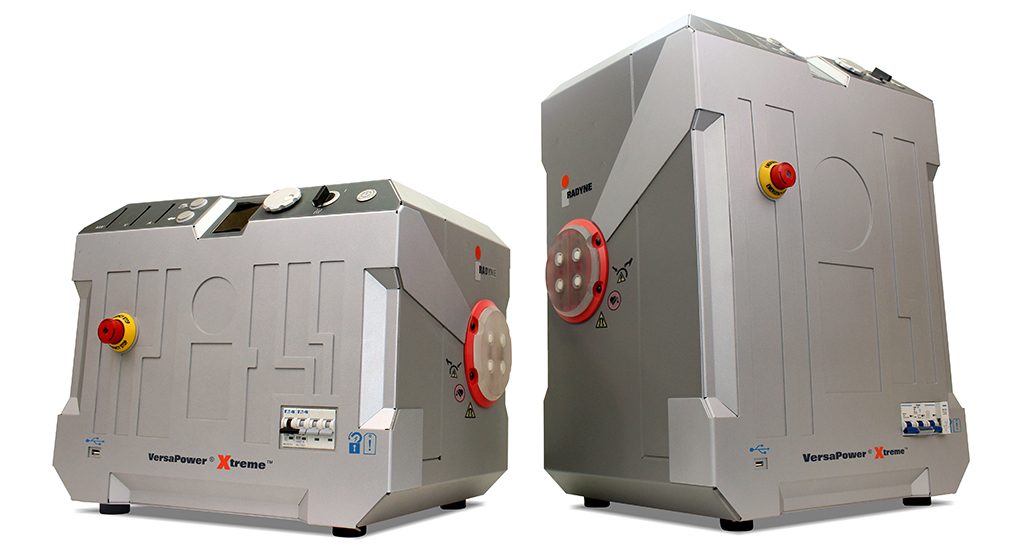Basics of Induction Heating

Induction Heating
Simply stated, induction heating is the cleanest, most efficient, cost-effective, precise, and repeatable method of material heating available to the industry, today.
Precisely designed induction coils teamed up with a powerful and flexible induction power supply produce repeatable heating outcomes specific to the desired application. Induction power supplies designed to accurately quantify material heating and respond to a material’s property changes during the heating cycle make achieving diverse heating profiles from a single heating application a reality.
The purpose of induction heating may be to harden a part to prevent wear; make metal malleable for forging or hot-forming into the desired shape; braze or solder two parts together; melt and mix the ingredients which go into the high-temperature alloys, making jet engines possible; or for any number of other applications.
The Basics
Induction heating takes place in an electrically conducting object (not necessarily magnetic steel) when the object is placed in a varying magnetic field. Induction heating is due to the hysteresis and eddy-current losses.
Hysteresis losses only occur in magnetic materials such as steel, nickel, and very few others. Hysteresis loss states that this is caused by friction between molecules when the material is magnetized first in one direction, and then in the other. The molecules may be regarded as small magnets which turn around with each reversal of direction of the magnetic field. Work (energy) is required to turn them around. The energy converts into heat. The rate of expenditure of energy (power) increases with an increased rate of reversal (frequency).
Eddy-current losses occur in any conducting material in a varying magnetic field. This causes heating, even if the materials do not have any of the magnetic properties usually associated with iron and steel. Examples are copper, brass, aluminum, zirconium, nonmagnetic stainless steel, and uranium. Eddy currents are electric currents induced by transformer action in the material. As their name implies, they appear to flow around in swirls on eddies within a solid mass of material. Eddy-current losses are much more important than hysteresis losses in induction heating. Note that induction heating is applied to nonmagnetic materials, where no hysteresis losses occur.

For the heating of steel for hardening, forging, melting, or any other purposes which require a temperature above Curie temperature, we cannot depend upon hysteresis. Steel loses its magnetic properties above this temperature. When steel is heated below the Curie point, the contribution of hysteresis is usually so small that it can be ignored. For all practical purposes, the I2R of the eddy currents is the only way in which electrical energy can be turned into heat for induction heating purposes.
Two basic things for induction heating to occur:
- A changing magnetic field
- An electrically conductive material placed into the magnetic field
Advantages of Induction Heating
Induction heating is particularly useful where highly repetitive operations are performed. Once an induction heating machine is properly adjusted, part after part is heated with identical results. The ability of induction heating to heat successive parts identically means that the process is adaptable to completely automatic operation, where the workpieces are loaded and unloaded mechanically.
Induction heating has made it possible to locate operations, such as hardening, in production lines along with other machine tools instead of in remote, separate departments. This saves the time of transporting the parts from one part of the factory to another. Induction heating is clean. It does not throw off unpleasant heat. Working conditions around induction heating machines are good. They do not give off the smoke and dirt which are sometimes associated with heat-treating departments and forge shops.
Another desirable characteristic of induction heating is its ability to heat only a small portion of a workpiece, offering advantages where it is unnecessary to heat the whole part. This advantage is critical in essential parts with a few localized high-wear areas during normal operation. Previously, a higher quality, more expensive material would be required to withstand the wear of operation. With induction, less expensive materials can be locally processed to achieve the durability required.
Induction heating is fast. A properly tuned induction heating machine can process high part volumes per minute by utilizing efficient coil design and part handling. Since induction heating machines are well suited to automation, they can easily integrate with existing part production lines. Unlike radiant heating solutions, induction heating heats only the part inside the coil without wasting energy on unnecessary heating.
Induction heating is clean. Without flame operations that leave soot or otherwise require cleaning after heating, induction is a choice for parts that require clean heating, such as in brazing operations. Because induction heating utilizes magnetic fields that are permeable through glass or other materials, controlled atmosphere heating through induction is a possibility.
History of Induction Heating

Faraday (1791-1867) was familiar with the fundamental principles underlying induction. The emphasis at first was on the undesirable effects of the phenomenon. Much attention was paid to finding methods to reduce the effects of induction so that devices like transformers, motors, and generators could become more efficient.
Michael Faraday (1791-1867) is generally credited with the discovery of the fundamental principles underlying induction heating in 1831. However, the focus of induction research was on finding methods to reduce the effects of induction so that devices like transformers, motors, and generators could become more efficient at first.
Interest in the possibility of melting metals by induction started in 1916. One of the earliest commercial applications was the melting of small charges using spark-gap oscillators. Another early application was heating metallic elements of vacuum tubes to drive off absorbed gases prior to sealing.
For a few years prior to World War II, a number of companies, more or less independently, began to realize that induction held the solution to a wide variety of specialized heating applications. Although induction had not become an industrial process for long after its theoretical discovery, its growth was rapid during World War II when there arose an immediate need for producing large numbers of parts with minimal labor.
Today, induction has taken its place in our industrial economy as a means of speeding part production, reducing production costs, and achieving quality results.
Click to learn about Radyne’s history
The Future of Induction

With the coming age of highly engineered materials, alternative energies and the need for empowering developing countries, the unique capabilities of induction offer engineers and designers of the future a fast, efficient, and precise method of heating.
As the technology of choice for rapid, clean heating that is repeatable, accurate, and efficient, induction has established itself firmly in the future of manufacturing as a cornerstone of the industry. Induction’s rapid maturity since its discovery has earned it a reputation of cutting edge technology, critical to discovering new processes that are more effective. Today, induction is synonymous with groundbreaking solutions, paving the way to a new paradigm in manufacturing technology.
Radyne technology is at the forefront of induction heating, innovating in new ways to further develop induction heating techniques and processes in new, previously abandoned areas. We are a world-leading manufacturer and pioneer in the development of advanced induction and controlled atmosphere heating equipment. Click here to learn more about TFD Power Supply.
Further Reading
Further discussion on the topic of the fundamentals of induction heating can be found by continuing on to our article on advanced induction heater concepts, covering topics that build on the foundation in induction heating theory established here. For even more induction heating resources, Radyne supplies a few resources for your convenience allowing you to leverage induction theory for informed operation: including posters for reference of common laboratory and shop floor charts and reference books on the topic of the basics of induction.